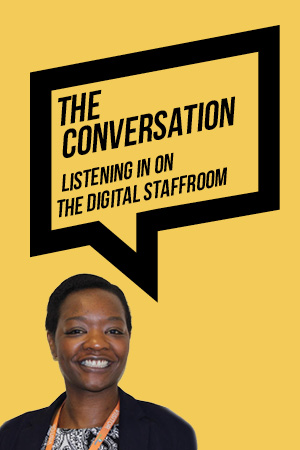Set The Bar High
@P_A_Kirschner and @MirjamN
This is a powerful and important piece. The issue of grade inflation is often raised, and in this blog Kirschner and Neelen offer an international perspective. They show that lowered expectations of young people is not just an issue in the UK, and link it to teachers’ expectations and choices about differentiation. They summarise research (Gershenson, 2020) showing that students with teachers who have higher grading standards achieve significantly higher exam results.
But of course, Kirschner and Neelen are not suggesting that this is the active variable. Rather, their argument is that it reflects the power of high expectations. “Teachers who see the potential of their students, acknowledge their potential and also believe in it… increase the chance that those children do better in school and continue their studies successfully.”
Live Marking
@MissTBegum
Another thoughtful and useful post from Miss Begum, in which she shares her approach to live marking. Begum defines the concept clearly and then outlines a number of benefits to the practice, including increased student motivation and reduced teacher workload.
However, the real power of this blog comes from the clear explanation of practicalities of using live marking, along with some key lessons she has learned along the way. Especially helpful are the piece’s supporting videos of live marking in action and examples of student work. As Begum notes, “Live marking […] takes time to perfect and improve.” If it’s a skill you intend to develop, I can’t think of a better place to start.
Professional Development: From Answers to Problems
@overpractised
In this helpful blog, Sarah Cottingham brilliantly captures the difference between offering answers and identifying and solving the underlying problems. Busy managers, mentors and even coaches can make the mistake of offering answers, Cottingham explains, overlooking the agency of the teacher and their own mental models of best practice.
Instead, her coaching approach focuses on building a shared understanding of a problem, offering hypotheses instead of solutions. This fits fantastically with research into teacher professional development and Harry Fletcher-Wood’s work on building habits of success. The potential benefits in supporting teachers to make positive changes to their practice are clear. As Cottingham convincingly argues, this “helps to build a culture of continual improvement, alleviates some of the sting, professionalises the teacher and proves a more honest approach to professional development.”
Implementation Plan 2.0
@DurringResearch
If there is a connection between this week’s pieces it is that each writer uses research to guide and adapt their practice. This piece from the team at Durrington Research School is no exception. The focus here is on making use of the EEF’s guidance report into implementation (2019). This is a report I find very useful, refer to regularly and recommend all school leaders read, but at 48 pages there is quite a lot to digest.
What this blog sets out is a model implementation plan which could be used to prepare for changes. The links to the underlying research are clearly explained, as well as its development from an earlier version to better recognise “the special importance professional development holds within implementation”. Succinct and practical as all such tools should be, this is a great idea, generously shared.
The Surprising Truth About Using Highlighting To Study
@Inner_Drive
I’ve long been aware of research suggesting that highlighting is not an efficient revision technique for students. Accordingly, I encourage my students to adopt other approaches. However, the research by Pone, Mayer and Mendez (2022) cited in this blog suggests I possibly shouldn’t have written it off altogether.
The authors specifically looked at the advantages of “instructor-provided highlighting”, and this blog offers clear suggestions on how to use this technique in the classroom to maximise impact.
If your students are like mine and, in spite of encouragement to try other techniques, remain deeply fond of their highlighters, this may be a useful read. After all, as the blog argues, “highlighting is not necessarily a bad learning strategy. It is probably better thought of as a very limited one.”













Your thoughts